A recent survey conducted by Preply, an American company specialised in foreign language learning, revealed that 70% of 18–25-year-olds and 53% of those aged 25-41 mostly watch online video content with subtitles turned on. A growing trend not only in the US, but also among younger generations across Europe. The underlying reasons are linked not only to wanting to view videos in their original language or to get a sneak preview or even to learn a new language, but also, and perhaps more significantly, the diverse ways in which we ‘consume’ these content types. With the upsurge of streaming platforms and greater accessibility, the devices we use to view content have changed, largely smartphones and PCs, as has the context in which we are viewing: on trains, at bus stops, getting our coffee or even queueing at the supermarket. Both where we’re viewing, typically in crowded public places, and our attention span, which is limited as we’re doing more than one thing at a time, are leading us to disable the audio and opt instead for captions.
Turning on the subtitles, whether they are captioning the original audio or subtitling a different language, is an increasingly widespread practice in our daily lives, and not just as we watch content for entertainment, but also in professional and educational environments too. During the pandemic, remotely delivered courses and live-streamed events and conferences increased exponentially, all of which call for professional, multilingual transcription and subtitling.
It becomes clear, therefore, that making an increasing amount of accurately subtitled video content available in as many languages as possible presents both an opportunity and a challenge for all those involved: content creators, companies, translators and delivery platforms. Whether it’s a corporate event or a TV series, the subtitling process calls for professionalism, an understanding of the relevant context and cultural sensitivity.
Our team is made up of over a hundred linguists specialised in multimedia and audio-visual content offering transcription, translation, subtitling, timecoding and video-dubbing services.
Get in touch and tell us about your multimedia project. We’ll work with you to identify the most suitable solution to enhancing it no matter how it’s used.


